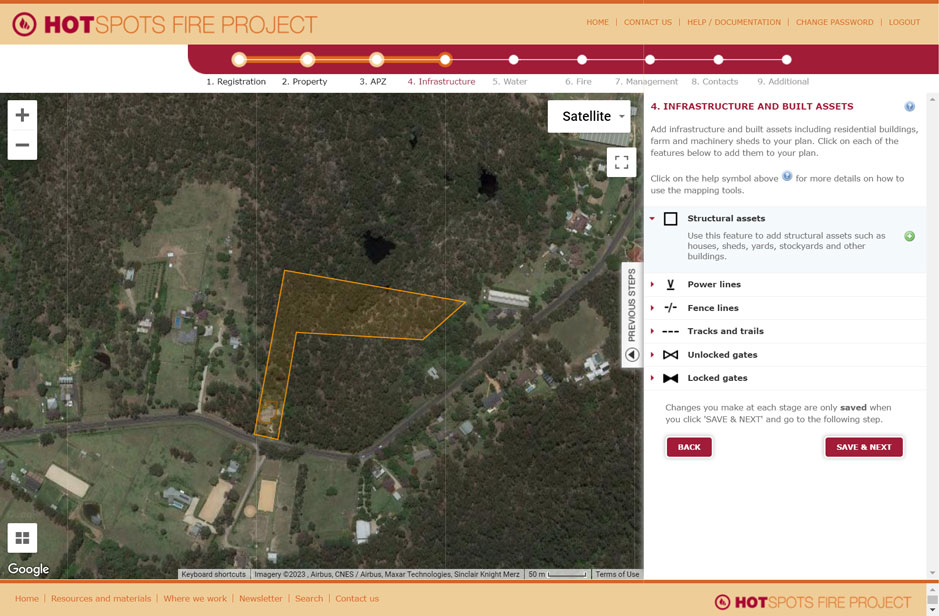Rural and farm fire preparation

The threat of fire is a year-round risk in Australia. However, for anyone living on – or managing – a small farm or a rural property, a long hot summer and the onset of the declared fire season is the time to be proactive and to prepare for bush fires. Living out of town and in a rural area is vastly different when it comes to fire-fighting services because of the much lower population densities and greater travelling distances between farms.
Having a fire management plan in place to protect your property, machinery, livestock and especially your loved ones is the best defence against bush fires and grassfires.
The NSW RFS has a strong partnership with the NSW Farmers Association to help mitigate and respond to the threat of fires. This cooperation has resulted in the development of the Farm Fire Plan that lists 4 simple steps to help farmers and rural property owners to get ready for a bush fire.
Step 1 of the Farm Fire Plan encourages landowners to create a property map that identifies important features, like likely hazards/fire path, key assets, water sources, etc. You can use a photocopy of the property map, aerial image or draw mud map using the blank pages in Step 1.
Otherwise, you can create an account on the Hotspots Fire Project website and create a Fire Management Plan for your property online by following step-by-step prompts and guidelines developed by the Hotspots project team consisting of members from the NSW Rural Fire Service and the Nature Conservation Council of NSW.
This plan can be revisited, updated and printed out at any time (and it’s recommended that you review you plan annually) and is a great first step in managing fire on a rural property.
Hotspots project team also runs a NSW training program, which provides landholders and land managers with the skills and knowledge needed to actively and collectively participate in fire management planning and implementation for the protection and enhancement of biodiversity conservation.
You can keep an eye out on their upcoming workshops here or browse a collection of useful and education materials tailored to our area, Hawkesbury-Nepean Catchment Management Authority (CMA), here.
Your bush fire responsibilities under the law (Farmstyle Australia, 2022)
With farm/rural land ownership also comes significant bush fire management responsibilities, even for small holdings. Under NSW legislation the onus is on the farm owner to prevent fires from starting, and if a fire does start, to have adequate resources to extinguish the fire before it spreads to neighbouring properties. If the owner fails to do this, they could be liable for any damage the fire causes.
Depending on the incident, the landholder could also be liable for prosecution under the Act if they fail to take reasonable steps regarding fire hazard management, or if they recklessly cause the fire in the first place – e.g. by lighting it during a high fire danger period or by choosing to use machinery in dangerous weather conditions.
The legislation is also very clear that reasonable steps must be taken regarding fire risk management and these should be based on the level of hazard. If there's a large fire hazard, then the property owner should have adequate measures in place to manage such hazards. This might mean, for example, that additional farm fire equipment is required beyond those needed to protect just the homestead.
Download the ‘Prepare Your Rural Property’ factsheet or visit RFS website for further information on:
- Guidelines around Farm Fire Units
- Safe Harvesting Operations
- Appropriate Haystack Management
- Safe Burning Procedures
- Standards for low intensity bush fire hazard reduction burning reduction burning (for private landholders)








